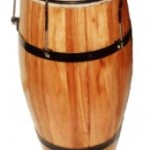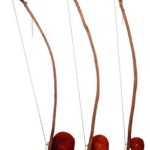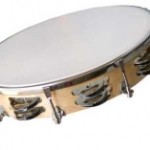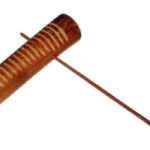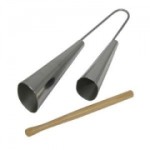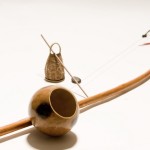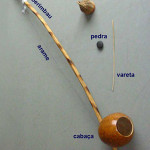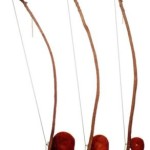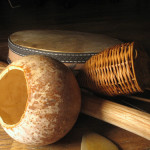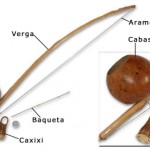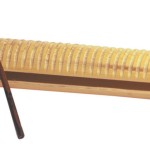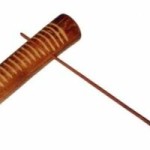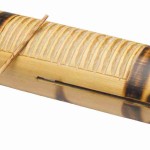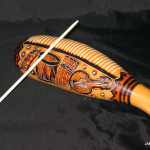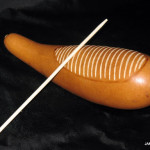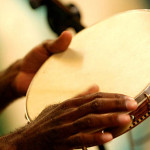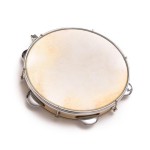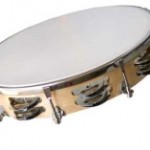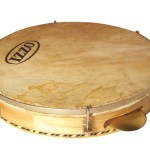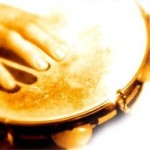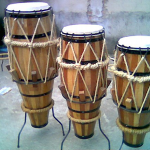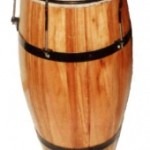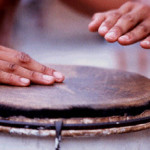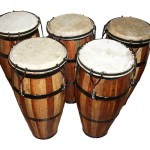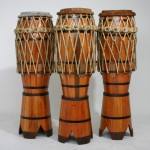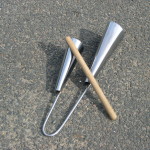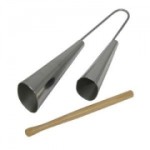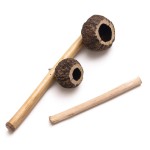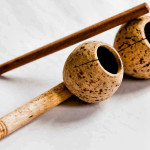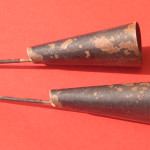Click on an instrument, to read its description.
Description | Photos
Extrait :
Berimbau
Historical
Its origin may come from the southern parts of Africa, and then traveled to Baía during the time of Capoeira prohibition. There are two types of musical arcs that give its origin to the Brazilian Berimbau: the Mbulumbumba, from the region of Huila in southern Angola, and the Hungu from the province of Luanda, capital of Angola.
Descripton
The Brazilian berimbau sounds more like the Hungu. The manufacture of the instrument is handcrafted.
The calabash is cut and emptied. Its opening gives the particular sound of the instrument. A long piece of flexible wood (not too much), cut from a tree, holds the metal string.
Use
Players type with a small piece of wood called ” baqueta ” on the string and vary notes with a small stone to produce different sounds. The Caxixi, a small straw basket filled with seeds, is simultaneously shaked for the rhythm to be marked.
There are three kinds of Berimbau: Viola (small calabash with a high-pitched sound), Medio (medium size) and Gunga (large calabash with a low sound) . In the Capoeira of Angola, Gunga is very important. The player (usually the older Master) stands in the middle of the musicians, leads the rhythm and the atmosphere of the game. Today, it is considered as a symbol of fight in Capoeira.
Description | Photos
Extrait :
Reco Reco
Historical
Its geographical and historical origin remains mysterious… However given its simplicity and the fact that this type of instruments was identified as prehistoric, the reco-reco appears to be a very old instrument.
Descripton
The Guiro is a similar instrument, very common in Cuban music. The difference between the two instruments is partly due to their geographical origins; the reco-reco is from Brazil while Guiro is played in Cuba, Puerto Rico and more generally throughout the Northern Latin America where it has many names such as ” rascador ” guayo “or” charasca “.
Use
The most common form of reco-reco is a handcrafted piece of bamboo, scratched with a wand. It sounds like a croaking frog.
Description | Photos
Extrait :
Pandeiro
Historical
Its Arab ancestor is the Bendir which is still popular in northern African countries. The Pandeiro was taken to Brazil by the Portuguese. It is often used in carnivals.
Descripton
It is a wooden cylinder with integrated small metal cymbals for a loud and clear sound, and a goat or synthetic skin that gives the instrument a warm sound.
Use
The first hand holds the wooden part while the second plays the rhythm on the skin.
Description | Photos
Extrait :
Atabaque
Historical
It is probably the first percussion played in Capoeira and is the most important instrument in Maculele.
Its ancient origin may come from Arab merchants crossing northern African countries. It became a sacred percussion used as a means of communication in rituals and dance. During slavery, its tradition was transmitted through many countries in African and South American colonies.
Descripton
4, 6 feet high, covered with cowhide, it is surrounded by ropes that allow tuning the instrument. Such as the Berimbau, three tones (low, medium and acute) may be issued with an Atabaque.
Use
It keeps a low resonance to the pace given by the Berimbau, even when Gunga (Ginga) changes. The Atabaque is powerful and should not cover the Berimbau rhythm. As for the Berimbau, low tone should mark the rhythm where the acute stands for improvising and energizing the melody.
Description | Photos
Extrait :
Agogo
Historical
Its name comes from Akoko in Nagô language, which means clock or time: it marks the tempo. It is played in Brazil and everywhere where African slaves were deported.
Descripton
It is made with shells containing Amazonian nuts (Castanha-do-Pará). It may also be composed of a round-shaped metal to which different metal cones are fixed.
Use
The player holds the instrument in one hand while the second hits the cones with an iron or wood rod. It enriches the pace and bring a shiny effect in the musical color.





